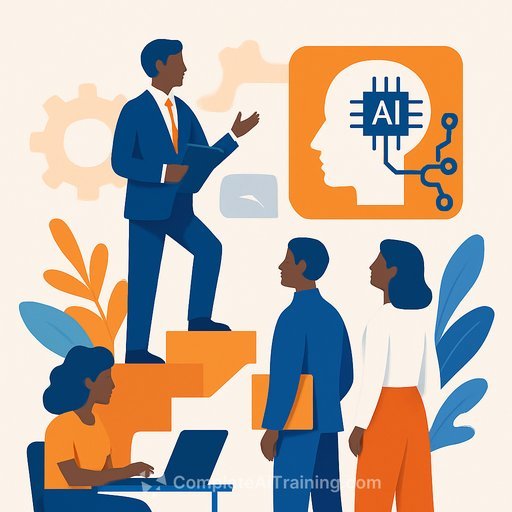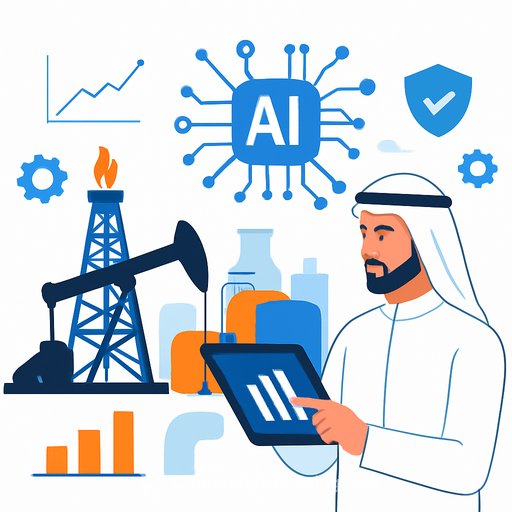What would Peter Drucker say about AI? Judgment, responsibility, purpose
Executives are obsessing over what AI can do. Drucker would ask a different question: now, what must humans do?
His answer still holds: humans decide, judge, and take responsibility. AI can draft, code, and analyze, but it can't be accountable-or create purpose.
The real risk isn't automation. It's aimlessness.
New graduates and early-career workers are watching tasks they trained for get absorbed by software. Without clear roles and ownership, people become, as Drucker warned, "a mass of social atoms flying through space without aim or purpose."
The data backs the shift. A 2023 Goldman Sachs study estimated AI could automate roughly one-quarter of work tasks in the U.S. and Europe. Source
Companies that assumed automation alone would boost performance are learning a simple lesson: without clear accountability, human-AI teams underperform. Some firms that downsized roles tied to routine tasks have since rehired into roles requiring critical thinking and ownership.
Drucker's three duties for the AI era
1) Define purpose
Education and training can't stop at tools. People need the context to answer: What problem does this tech solve? Who benefits? Who is accountable when it fails?
- Write a one-page purpose memo for every AI use case: problem, beneficiary, boundary conditions, decision owner.
- Map stakeholders: customers, employees, regulators, society. Note second-order effects.
- Run a pre-mortem: list failure modes, harms, and who owns prevention and response.
2) Make people productive
Productivity isn't doing more. It's enabling meaningful contribution. AI should compress routine work so people can focus on judgment, relationships, and outcomes.
- Redesign roles with a task inventory: automate tasks; augment tasks; reserve decisions for humans.
- Define "human-in-the-loop" checkpoints and "no-go" decisions that require human sign-off.
- Measure effectiveness: decision quality, cycle time, error rate, and customer impact-not just throughput.
- In healthcare-like settings, let AI process data; let clinicians spend time with patients.
3) Teach responsibility
Responsibility can't be automated. Algorithms operate; people are accountable.
- Assign a single accountable owner (name, not a committee) for each AI-assisted decision flow.
- Create an incident playbook: pause criteria, escalation path, customer communication, and remediation.
- Log key decisions and model versions to enable audits and learning.
- Train teams on bias, data provenance, and privacy-tie it to real consequences and incentives.
Manager's playbook: Build a functioning human-AI system
- Set the bar: define "acceptable decision quality" and the evidence required before deployment.
- RACI for AI: who recommends, approves, executes, and is accountable.
- Guardrails: data lineage checks, input/output thresholds, and fallback to human decision-making.
- Review cadence: weekly operational review; monthly model performance; quarterly ethics and impact review.
- Customer transparency: state when AI is used, how to appeal, and who to contact.
90-day adoption sprint
- Days 1-15: inventory decisions and tasks, select 2-3 AI use cases with clear owners.
- Days 16-45: pilot with human-in-the-loop, define metrics, document failure modes.
- Days 46-75: train teams on new workflows; adjust incentives to reward judgment and outcomes.
- Days 76-90: formalize governance, publish your accountability map, and scale carefully.
What this means for leadership
Your edge won't be the model you pick. It will be how you assign ownership, design workflows, and cultivate judgment.
Do this well and AI becomes a force multiplier for human responsibility. Do it poorly and you get faster mistakes, diluted accountability, and disengaged teams.
Where to skill up
If your teams need structured upskilling by job function, review curated options here: Complete AI Training - Courses by Job.
Bottom line
Drucker's insight is more urgent than ever: effectiveness is converting intelligence into responsible action. The future won't be decided by the next AI release-it will be decided by managers who instill purpose, productivity, and responsibility in every team.
Your membership also unlocks:






